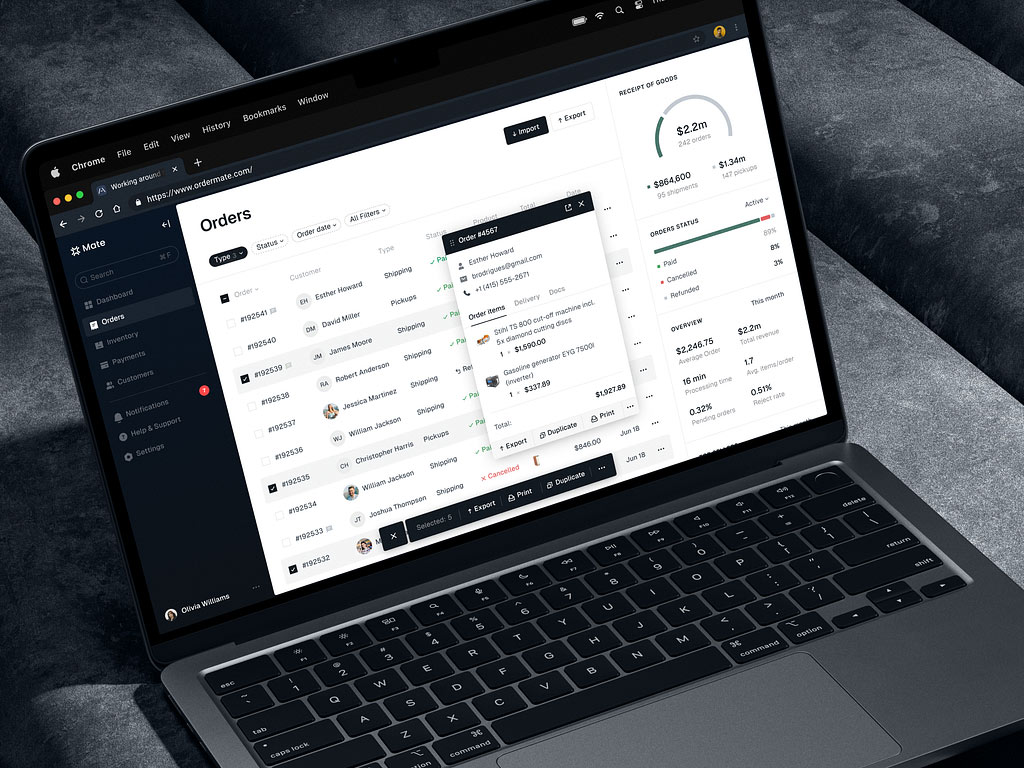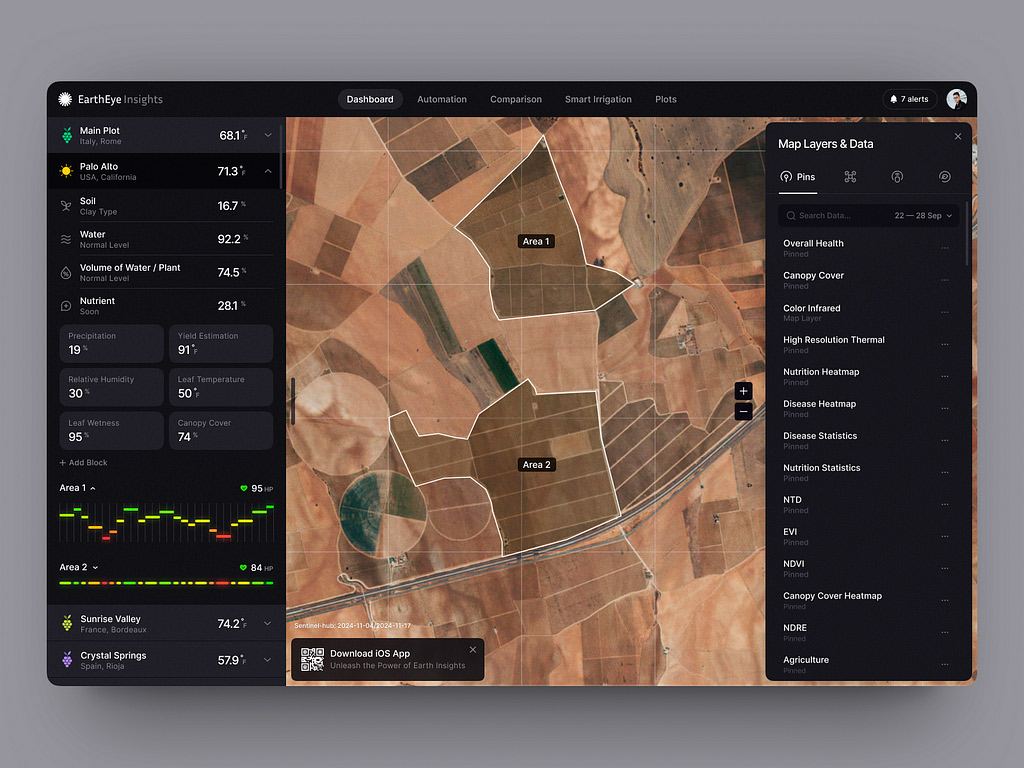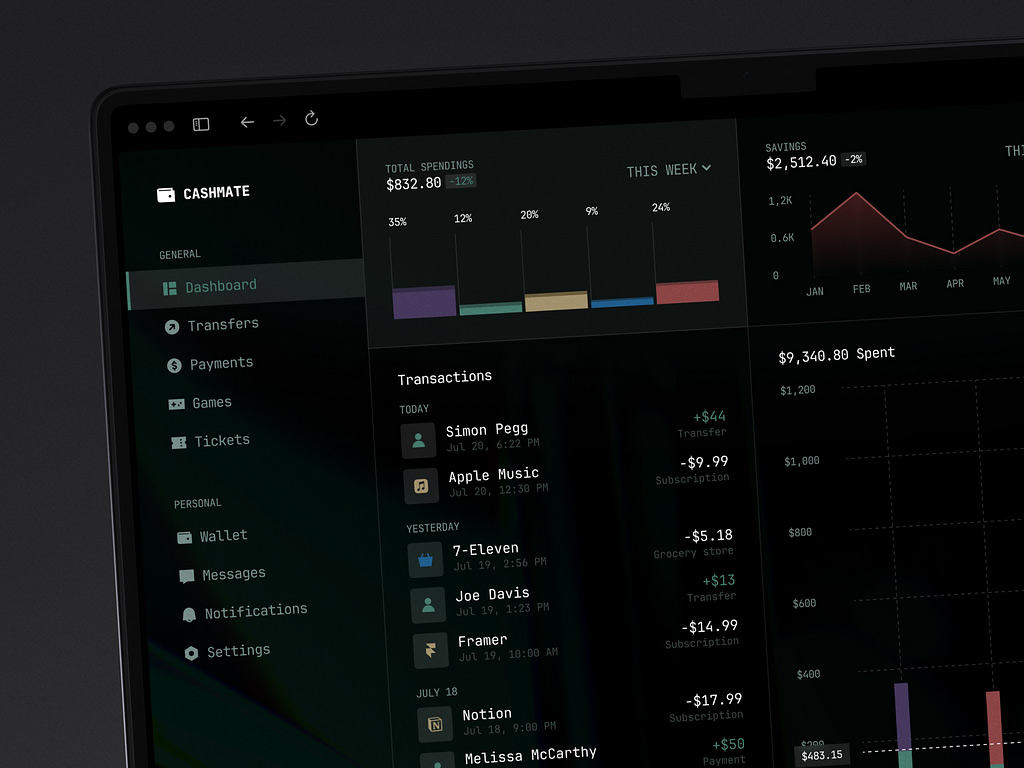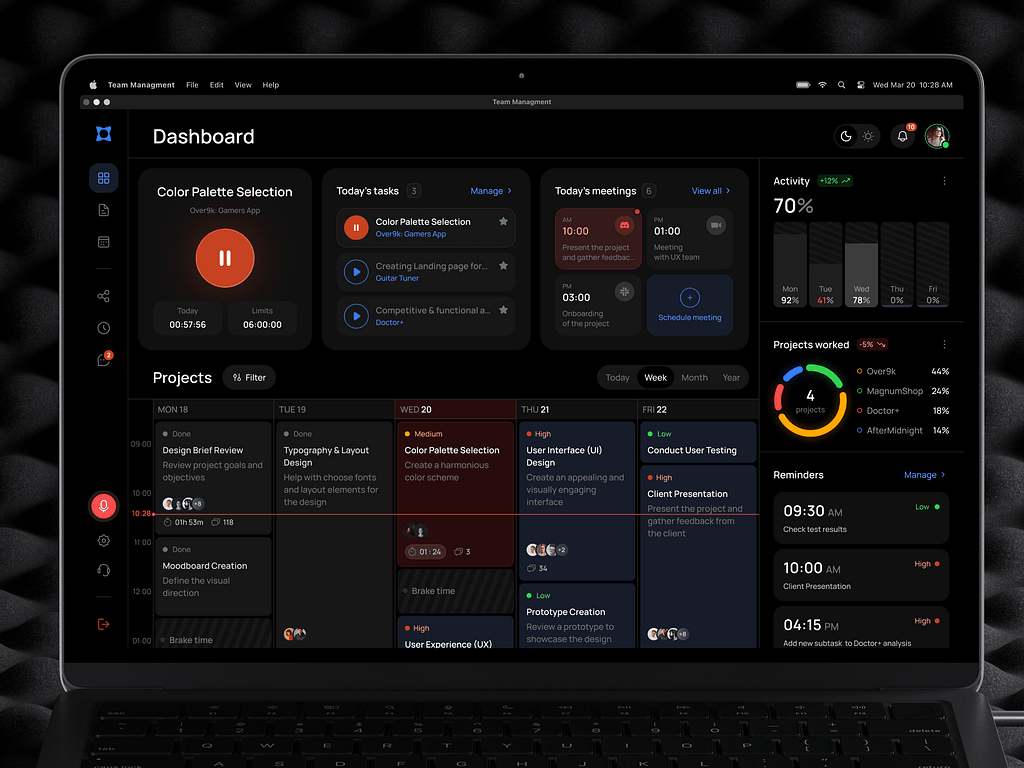When you are just starting your developer career, picking a primary programming language for your skillset shapes how the next few years will go. Will your expertise be in demand? This question is also burning for experienced programmers who want to switch paths. The possibility of a mistake and wasted time ignites fear inside hearts.
Contents:
This article will dive deep into the critical aspects you need to consider in the Golang vs. Java showdown: performance metrics, ease of learning, concurrency capabilities, and community support. Whether you’re a seasoned developer or just starting, we’ll help you navigate the complexities and find your footing in the ongoing language rivalry.
What is Golang?
Golang, also known as Go, is an open-source programming language developed by Google to address shortcomings in other languages while providing high performance and simplicity. It was created by Robert Griesemer, Rob Pike, and Ken Thompson in 2007 and was released to the public as an open-source project in 2009.
The creators aimed to overcome the slow compilation times of C++ and the reliance on garbage collection, while improving ease of use and concurrency support.
Key features:
- Simplicity: Go has a clean syntax with a minimalistic design, making it easy to learn and write.
- Static Typing: Strong typing helps you catch errors during compile time.
- Concurrency Support: It features goroutines and channels, providing built-in support for concurrent programming.
- Efficient Performance: Compiled to machine code, Go programs are fast and highly efficient.
- Garbage Collection: Automatic memory management facilitates memory leak prevention.
- Rich Standard Library: The language provides a comprehensive standard library, making it suitable for various applications.
- Cross-Platform: You can easily compile code to run on multiple operating systems including Windows, macOS, and Linux.
Advantages of Golang
- Fast Compilation: Go compiles quickly, which is beneficial during the development process.
- Concurrency Model: The goroutines make it simple to write concurrent programs, improving performance in multi-core processors.
- Strong Community: An active developer community that contributes libraries, frameworks, and tools.
- Ecosystem: Growing ecosystem with frameworks like Gin for web applications and gRPC for service communication.
- Accessibility: Well-documented and easy to set up, making it ideal for beginners.
Disadvantages of Golang
- Lack of Generics: Until the release of Go 1.18, it was harder to write reusable code, though this has since improved.
- Verbose Error Handling: Error handling can feel cumbersome due to the lack of exceptions.
- Limited Language Features: Go intentionally leaves out certain features such as inheritance, which some developers may miss.
- Performance: While Go is efficient, it may not match the performance of low-level languages like C or C++ in certain scenarios.
Popular use cases
- Web Development: Frameworks like Gin and Echo make it a great choice for building RESTful APIs.
- Cloud Computing: Widely used in cloud services and microservices architectures due to its efficiency and scalability.
- DevOps Tools: Many DevOps tools, such as Docker and Kubernetes, are built using Go for its speed and simplicity.
- Network Servers: Ideal for building high-performance network servers and message brokers.
- Data Processing: Efficient for processing large datasets in real-time due to its concurrency capabilities.

E-Commerce Admin Dashboard by Shakuro
What is Java?
Java is a high-level, object-oriented programming language that was designed to have as few implementation dependencies as possible. It is widely used for building enterprise-level applications, mobile applications, web applications, and more.
James Gosling and his team at Sun Microsystems began developing the language in 1991. Originally called “Oak,” it received a new name—”Java” in 1995. After the release, it quickly became popular due to its “Write Once, Run Anywhere” (WORA) capability. The aim was to create software for various devices, like televisions and set-top boxes. However, Java quickly became a general-purpose programming language for web application building.
Key features:
- Object-Oriented: Java is built on the principles of object-oriented programming (OOP), allowing for code modularity, reuse, and easier maintenance.
- Platform Independence: With a Java Virtual Machine (JVM), you can execute the bytecode on any platform, enabling the WORA capability.
- Strongly Typed: Java enforces strong type-checking, catching many errors at compile time.
- Automatic Memory Management: It uses garbage collection to manage memory, reducing the risk of memory leaks automatically.
- Multithreading: Java has built-in support for multithreading, improving the app’s efficiency.
- Rich Standard Library: There is a comprehensive standard library (Java API) that supports various functionalities such as networking, data manipulation, and GUI development.
- Security Features: Java includes several security features, such as the Java Security Manager, which can restrict the application’s possible actions.
- Robustness: The language emphasizes early error checking and provides a strong exception-handling mechanism, making it robust and less prone to crashes.
Advantages of Java
- Portability: Thanks to platform independence, your applications can run on any system with a JVM, facilitating cross-platform deployment.
- Large Ecosystem: A vast array of libraries, frameworks (like Spring or Hibernate), and tools enhance development capabilities.
- Community and Support: A large and active developer community provides extensive documentation, forums, and resources for assistance.
- Enterprise-Level Solutions: Java is a popular choice for large-scale enterprise applications due to its scalability, reliability, and maintainability.
- Performance: While not as fast as languages like C/C++, optimizations like Just-In-Time (JIT) compilation improve Java’s performance significantly.
Disadvantages of Java
- Performance Overhead: The JVM and garbage collection introduce performance overhead compared to native languages like C/C++.
- Verbosity: Java can be verbose compared to other languages, leading to increased code length and complexity for simple tasks.
- Memory Consumption: Java applications can use more memory than native applications due to the overhead of object-oriented paradigms and the requirement of the JVM.
- Learning Curve: While it’s easier for beginners to grasp programming concepts, the overall ecosystem (including frameworks and best practices) can be overwhelming.
Popular use cases
- Enterprise Applications: Many companies use Java in large-scale enterprise applications, thanks to frameworks like Spring and Java EE (Jakarta EE).
- Web Applications: Java technologies such as Servlets, JSP (JavaServer Pages), and frameworks like Spring MVC are often leveraged for web development.
- Mobile Applications: It is the primary language for Android app development, providing access to a vast ecosystem of mobile devices.
- Backend Development: The language is widely used on the server side for building robust and scalable backend services, APIs, and microservices.
- Big Data Technologies: Tools like Hadoop and Apache Kafka are written in Java, making it a popular choice in the big data landscape.
- Scientific Applications: Java is often applied in scientific computing and research projects due to its portability, scalability, and robust libraries.

Terraview Dashboard Design Concept by Shakuro
Golang vs. Java Comparison
Now that you know the general information about each language, let’s dive into the details. The table below compares Java and Go in terms of several major factors.

Performance
When comparing Go vs Java in speed, several factors come into play, including execution speed, memory management, concurrency handling, and overall efficiency.
Go is a compiled language that translates source code into machine code before execution. This typically results in faster execution times because there’s no intermediate layer (like a virtual machine in Java). Its design focuses on simplicity and direct hardware access, which can offer superior performance.
The language has a garbage collector, which is designed for low-latency performance. However, it’s generally more efficient at managing memory than Java’s garbage collection, resulting in improved performance in scenarios that require frequent allocation and deallocation of objects. It employs more lightweight concurrency primitives (goroutines) that consume less memory compared to Java threads.
One of Go’s standout features is its concurrency model. Goroutines are lightweight and more efficient than Java threads, allowing Go applications to manage thousands or even millions of concurrent operations without significant overhead.
The language is designed to be efficient with system resources, leading to lower CPU and memory usage in many scenarios. This can result in better performance in cloud environments where resource usage translates directly to cost.
Java is also a compiled language, but it compiles to bytecode that runs on the Java Virtual Machine (JVM). The JVM introduces some overhead due to Just-In-Time (JIT) compilation and garbage collection. It can optimize performance for long-running applications, but in short bursts or less complex computations, Go often has better performance.
Java’s garbage collector is more complex than Go’s, and although it has evolved significantly (with numerous algorithms like G1, ZGC, etc.), it can still lead to performance issues, especially in terms of latency due to pauses during garbage collection cycles. The objects tend to have a higher memory overhead, which may impact performance in large-scale applications with significant object instantiation.
Java’s concurrency is based on threads, which can be heavier in terms of memory and context switching. While Java offers a comprehensive concurrency framework (e.g., java.util.concurrent), managing threads can be more complex and prone to errors. The more traditional threading model leads to potentially higher overhead when scaling to a large number of operations.
As for resource consumption, Java apps can consume more resources due to JVM overhead and larger object sizes. The larger port of libraries and frameworks also adds extra bloat to apps.
In the Java vs Golang performance showdown, Golang generally outperforms Java in raw execution speed, memory management, and concurrency for many modern applications, especially those that are I/O bound or require low latency. However, the performance of both languages can vary depending on the specific use case, application architecture, and how well you leverage their respective ecosystems.

Finance Management Web Dashboard by Conceptzilla
Ease of use
Golang has a simpler and more concise syntax, making it easier for newcomers to grasp. The installation is straightforward and requires minimal setup. The tools are included in the distribution. In terms of error handling, the language uses a simple and explicit approach through return values, making it easy to understand where issues arise. Golang has built-in support for concurrency with goroutines and channels, simplifying concurrent programming. That’s why it is often perceived as having a gentler learning curve due to its simplicity and fewer concepts to learn.
In the Golang vs Java comparison, the latter has a more verbose syntax, which can lead to a steeper learning curve for beginners. The installation can be more complex due to the need for configuring the environment and managing JDK versions. The language employs exceptions, which can be less intuitive for some developers, especially when dealing with checked exceptions. When it comes to concurrency, Java uses threads and the synchronization model, and it is more complex and requires more boilerplate code. With its extensive features, while powerful, Java might introduce complexity and lengthen the learning process.
Generally speaking, Golang tends to be easier to use, especially for beginners, due to its simplicity and straightforward approach. Java, while powerful and feature-rich, may require more time to learn due to its complexity and verbose nature.
Ecosystem and libraries
Go has a relatively simple ecosystem. It comes with a rich standard library that covers various functionalities, from HTTP to JSON and Goroutines for concurrency. While the language is new (released in 2009), it has grown rapidly in popularity, especially in cloud and microservices contexts. This has resulted in a vibrant community contributing tools, frameworks, and libraries, particularly targeted towards web development, microservices, and cloud-native applications. Libraries like Gin for web frameworks and Gorm for ORM are popular.
Java has been around since 1995, leading to a vast and mature ecosystem. It is widely used in enterprise environments, offering a plethora of libraries and frameworks, especially in the web development space (e.g., Spring, Hibernate). Popular frameworks (like Spring Boot, and Java EE) are equipped with a large set of features and integrate well with numerous libraries, providing a solid foundation for building scalable applications. There are thousands of third-party libraries available through repositories such as Maven Central, which significantly enhance the language’s capabilities.
Industry adoption
The demand for these technologies is a crucial point when comparing Java to Golang.
Go has gained significant traction in cloud computing and microservices architectures. It is commonly used in environments that require scalability and performance.
Notable companies like Google, Uber, Dropbox, and Netflix have adopted Go for critical parts of their systems, particularly where concurrency and performance are essential. As more and more companies leverage this language, the demand for Go developers increases, particularly in roles focused on cloud-native applications, and infrastructure development. If we compare Java vs Golang, microservices can be created with both languages effectively.
Java has a long-standing history in enterprise environments, especially for building large-scale, mission-critical applications. Its robustness, security features, and vast ecosystem make it a preferred choice for industries like finance, healthcare, and government.
Companies like IBM, Oracle, and LinkedIn use Java extensively due to its reliability, maintainability, and extensive library support. It is also heavily harnessed in large-scale backend systems.
Java’s popularity in educational institutions and its extensive use in enterprise-level applications have led to a strong developer base. Many companies invested in Java development, making it a staple in the industry. Java has a stable job market with a myriad of opportunities, especially in sectors that require enterprise-level applications.

Doctor’s Dashboard Design Concept by Shakuro
Final Verdict: Golang vs. Java
Choosing between Golang and Java for your next project depends on various factors, including the project-specific requirements, your team experience, and the ecosystem you want to leverage.
Pick Golang if:
- Your project requires handling many simultaneous tasks or high throughput (e.g., web servers, APIs, microservices).
- You’re building cloud-native applications or working with containers (e.g., Docker, Kubernetes). Many cloud-native tools are written in Go, and they integrate well into that ecosystem.
- You need a straightforward codebase that’s easy to maintain.
- Your application is designed as a set of loosely coupled microservices, Go’s performance and lightweight nature make it an excellent choice for creating efficient, scalable services.
- Your project requires strong tooling for automation and DevOps functionality, Go is widely used in building developer tools, command-line tools, and CI/CD systems.
Pick Java if:
- Your projects require robust, scalable, and maintainable solutions—especially in complex organizations.
- Your project requires a wide range of mature libraries and frameworks (such as Spring, Hibernate, and Java EE), Java’s rich ecosystem can save substantial development time and effort.
- You’re developing an application intended to last many years and require strong backward compatibility and ongoing support, Java’s stability and large workforce make it a reliable option.
- Your team has significant experience with Java, leveraging their existing knowledge can lead to faster development and fewer errors.
- You have a specific requirement for powerful constructs for multithreading and fine-grained control over threads.
Both Golang and Java have distinct advantages that can lead to powerful and efficient applications; the key is to choose the right tool for the job.
Do you need a development team to handle a project on Go or Java? Reach out to us and let’s work together on your future app.
